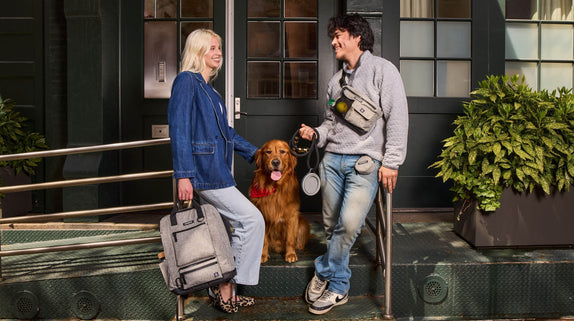How to Train Your Puppy: A Complete Guide to Puppy Obedience Training
Training a new puppy can be both exciting and challenging. Whether you’re a first-time dog owner or experienced with pets, understanding the basics of puppy training is crucial for a well-behaved and happy pup. In this guide, we’ll cover essential puppy training tips, from basic dog commands to teaching a puppy obedience.
1. Start with the Basics: How to Train a Puppy
When you bring your puppy home, the first step is to start with basic training. This includes potty training, crate training, and teaching your puppy to recognize their name. Establish a routine early on, as consistency is key to effective training. Having the right gear, like the Dog Walk & Train Training Sling, makes it easier to carry all the essentials for training sessions, whether you're at home or on the go.
2. Puppy Obedience Training: The Foundation
Obedience training is essential for a well-behaved dog. Start with simple commands like "sit," "stay," "come," and "leave it." These basic dog commands are the foundation of good behavior and will help you manage your puppy in various situations. Use positive reinforcement, such as treats and praise, to reward your puppy when they obey a command. The Snackpack Double Insulated Treat Pouch is perfect for keeping your puppy’s favorite treats handy during training sessions.

3. Puppy Training Tips for Success
- Be Consistent: Consistency is crucial in training a puppy. Use the same commands and reward system every time.
- Keep Training Sessions Short: Puppies have short attention spans, so keep sessions brief, around 5-10 minutes, and repeat them throughout the day.
- Use Positive Reinforcement: Reward your puppy immediately after they perform a desired behavior. This helps them associate the action with the reward.
4. How to Puppy Train: Addressing Behavioral Issues
Training isn’t just about teaching commands; it’s also about addressing unwanted behaviors. Common issues include chewing, barking, and jumping. Use a firm but gentle approach to correct these behaviors. Redirect their attention to appropriate toys or activities when they display unwanted behavior.
5. Teaching a Puppy Obedience: Advanced Commands
Once your puppy has mastered the basics, you can introduce more advanced commands. "Heel," "down," and "wait" are useful commands that can help in everyday situations. Incorporating these into your puppy's routine will make them more responsive and better behaved.

6. How Do You Train a Puppy? Be Patient and Positive
Training a puppy requires patience and persistence. Every puppy learns at their own pace, so don’t get discouraged if progress seems slow. Keep a positive attitude, and remember that training is a bonding experience for you and your puppy.
7. Dog Behavior 101: Understanding Your Puppy
Understanding your puppy's behavior is essential for effective training. Puppies are naturally curious and playful, which can sometimes lead to mischief. Recognizing the signs of anxiety, excitement, or boredom can help you tailor your training approach to meet your puppy’s needs.

8. How to Train My Puppy: A Recap
Training your puppy is a rewarding experience that sets the foundation for a lifelong bond. By focusing on consistency, positive reinforcement, and understanding your puppy’s behavior, you’ll raise a well-behaved and happy dog.
9. Final Thoughts: How to Puppy Training Success
Puppy training is an ongoing process, but with the right approach, it can be enjoyable and effective. Stick to the basics, be patient, and celebrate your puppy’s successes along the way. With these dog training tips for puppies, you’ll be well on your way to raising a well-mannered companion.



